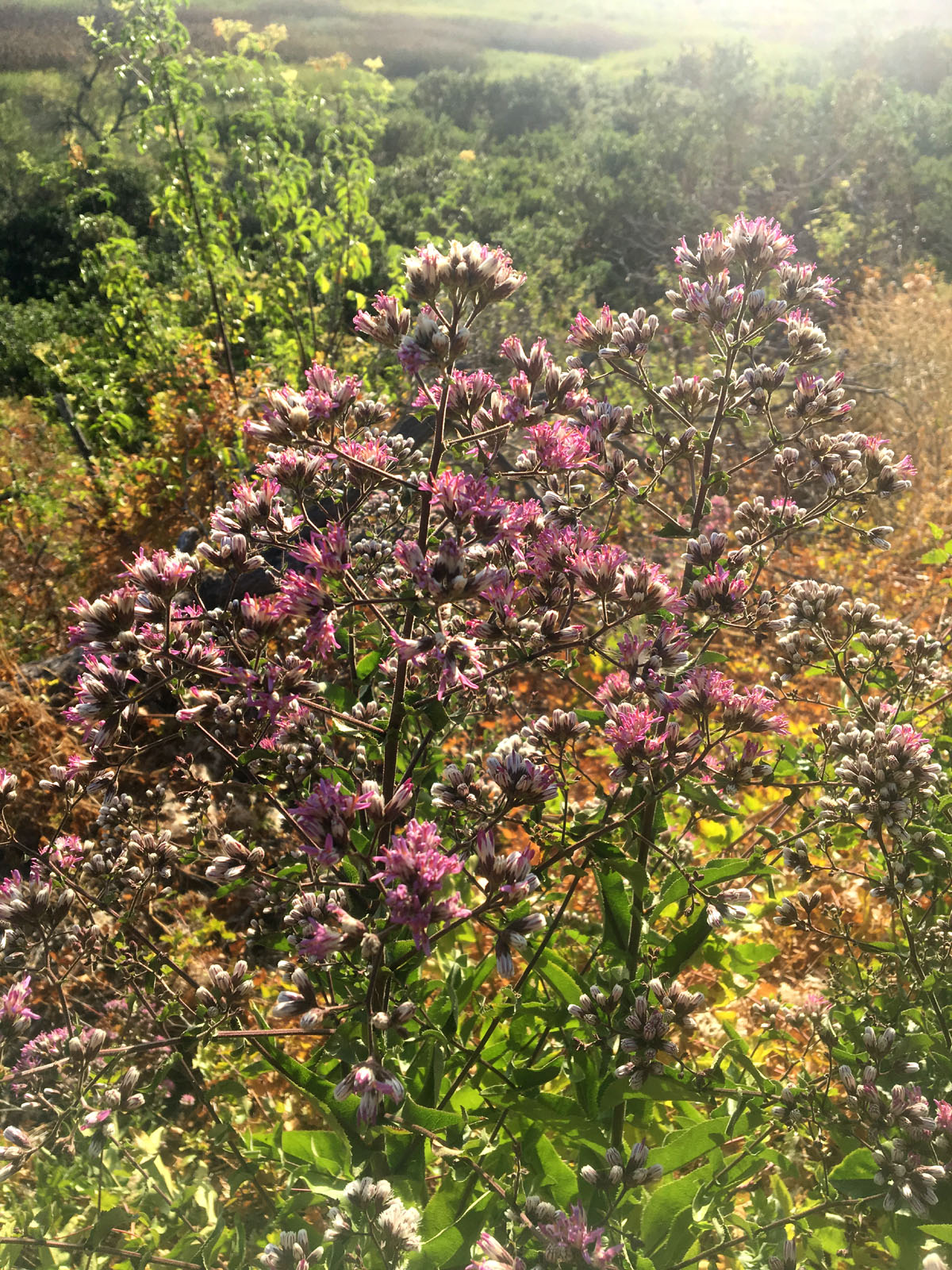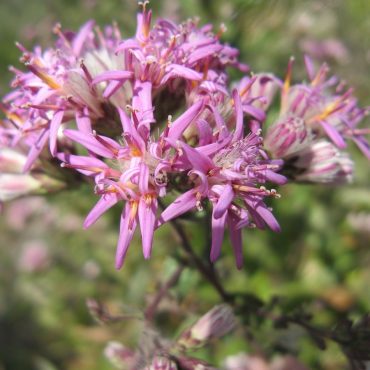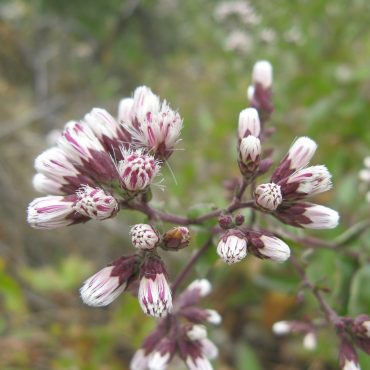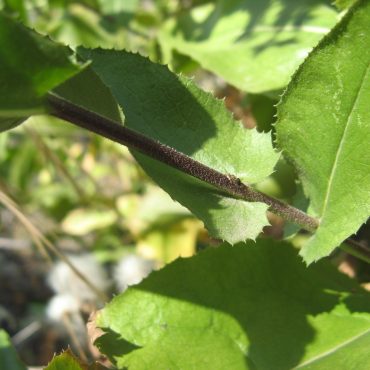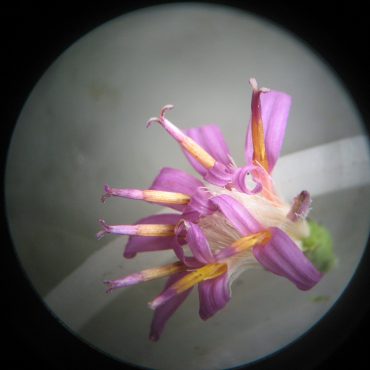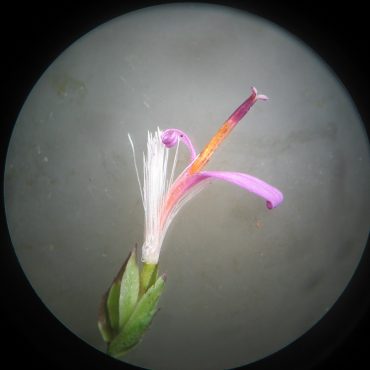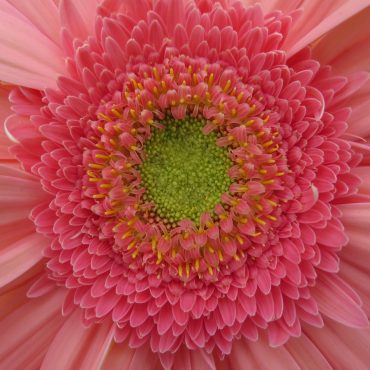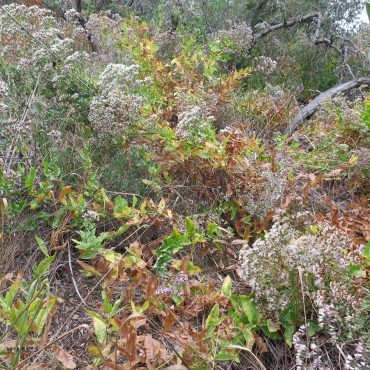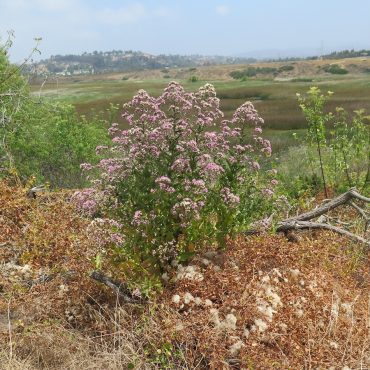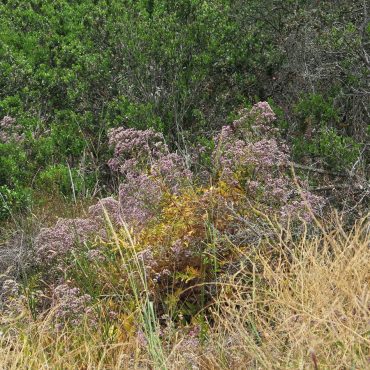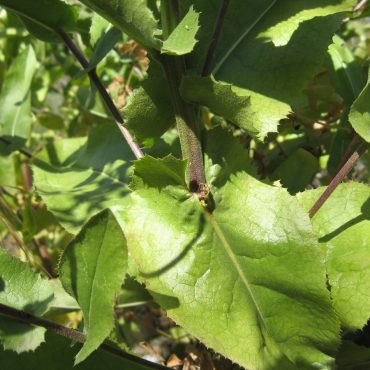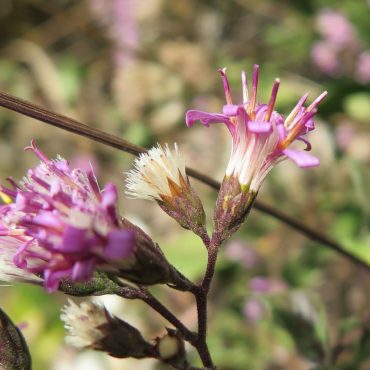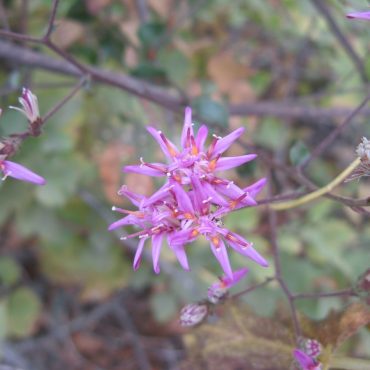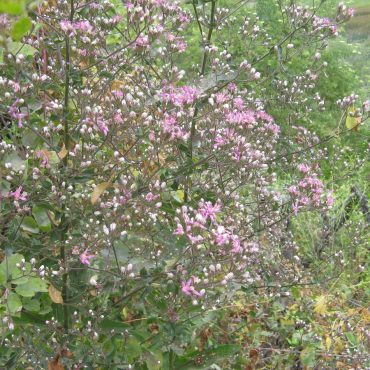A five foot tall sacapellote (Acourtia microcephala) grows beside the trail in East Basin. With with bright pink and orange curly flowers, this is not a shy plant, yet it remains one of the lesser known plants of the Reserve.
Sacapellote is one of a small taxonomic subgroup of plants in the sunflower family (Asteraceae). The individual florets, instead of being disk shaped and/or strap shaped have two lips, resembling two straps that arch away from the floret. The most familiar relative of Sacapellote is the gerbera (Transval) daisy.
Sacapellote is a fire-follower: one of a number of native plants of the chaparral that are more abundant, or more evident after a wildfire. The first season following a burn, sacapellote sends up lush new foliage, and it blooms and sets seeds prolifically. New seedlings emerge the second season and in subsequent seasons, becoming less abundant as the mature canopy of shrubs redevelops.

